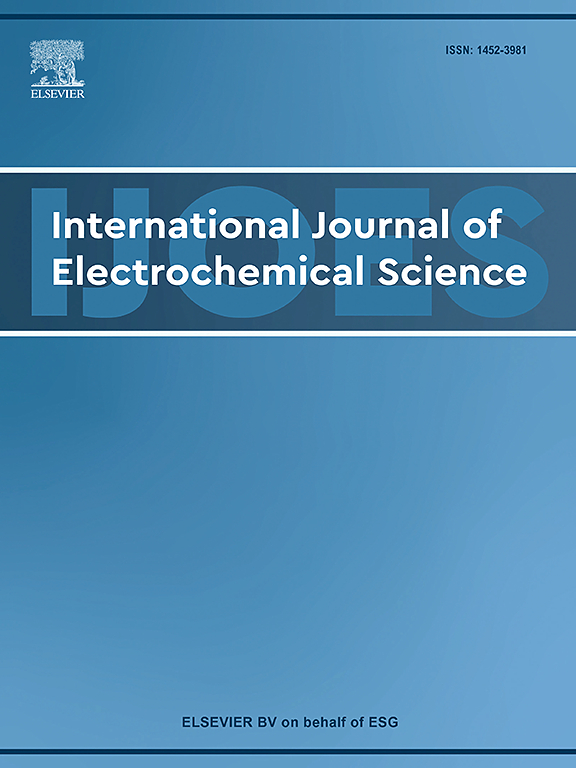基于ΔQ幂律的锂离子电池早期RUL预测动态双相似融合
IF 2.4
4区 化学
Q4 ELECTROCHEMISTRY
International Journal of Electrochemical Science
Pub Date : 2025-06-17
DOI:10.1016/j.ijoes.2025.101102
引用次数: 0
摘要
准确预测锂离子电池的剩余使用寿命(RUL)是保证系统安全、减少经济损失的关键。然而,现有的方法通常依赖于大量的特征参数,而没有充分利用历史样本数据的潜力。此外,在RUL的早期阶段,能力和历史样本之间的弱相关性往往会影响预测的准确性。为了解决这些挑战,本文提出了一种新的预测框架,DDSF-QD(结合ΔQ幂律和动态时间翘曲的动态双相似融合模型)。首先,使用CFK方法(CEEMDAN-Fuzzy Entropy-K-means)对原始数据进行去噪,提高数据质量。然后,构建提出的ΔQ(V)幂律来评估生命周期相似度,并结合DTW (Dynamic Time Warping)算法计算初始空间相似度。采用高质量的历史样本对网络进行训练,然后在DDSF (Dynamic Double Similarity Fusion model)框架内对其对应的权值进行动态融合,更新样本权值。这使得预测网络能够估计未来的容量退化趋势,并根据预定义的故障阈值预测RUL。在经典锂离子电池老化数据集上的实验结果证明了该方法的优越性能,确定系数(R²)达到99.85 %。据我们所知,ΔQ(V)幂律和DDSF框架都是首次提出,突出了它们在电池健康管理方面的潜力。本文章由计算机程序翻译,如有差异,请以英文原文为准。
Dynamic double similarity fusion based on ΔQ power law for early-cycle RUL prediction of lithium-ion batteries
Accurately predicting the remaining useful life (RUL) of lithium-ion batteries is essential for ensuring system safety and minimizing economic losses. However, existing methods generally rely on numerous feature parameters while underutilizing the potential of historical sample data. Additionally, in the early stages of RUL, the weak correlation between capacity and historical samples often compromises prediction accuracy. To address these challenges, this paper proposes a novel prediction framework, DDSF-QD (Dynamic Double Similarity Fusion model incorporating ΔQ Power Law and Dynamic Time Warping). First, the original data are denoised using the CFK method (CEEMDAN-Fuzzy Entropy-K-means) to improve data quality. Then, the proposed ΔQ(V) power law is constructed to evaluate lifetime similarity, and combined with the DTW (Dynamic Time Warping) algorithm to calculate the initial spatial similarity. High-quality historical samples are used to train the network, and then their corresponding weights are dynamically fused within the DDSF (Dynamic Double Similarity Fusion model) framework to update sample weights. This enables the prediction network to estimate future capacity degradation trends and predict RUL based on a predefined failure threshold. Experimental results on classical lithium-ion battery aging datasets demonstrate the superior performance of the proposed method, achieving a coefficient of determination (R²) of 99.85 %. To the best of our knowledge, both the ΔQ(V) power law and the DDSF framework are proposed for the first time, highlighting their potential in battery health management.
求助全文
通过发布文献求助,成功后即可免费获取论文全文。
去求助
来源期刊
CiteScore
3.00
自引率
20.00%
发文量
714
审稿时长
2.6 months
期刊介绍:
International Journal of Electrochemical Science is a peer-reviewed, open access journal that publishes original research articles, short communications as well as review articles in all areas of electrochemistry: Scope - Theoretical and Computational Electrochemistry - Processes on Electrodes - Electroanalytical Chemistry and Sensor Science - Corrosion - Electrochemical Energy Conversion and Storage - Electrochemical Engineering - Coatings - Electrochemical Synthesis - Bioelectrochemistry - Molecular Electrochemistry

 求助内容:
求助内容: 应助结果提醒方式:
应助结果提醒方式:


